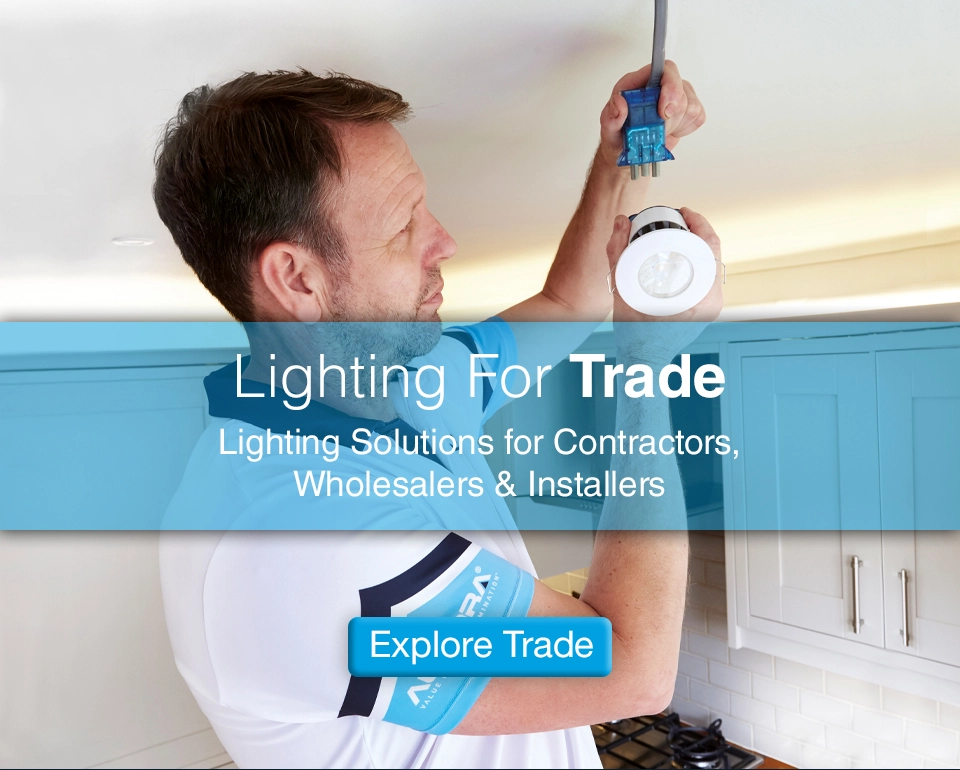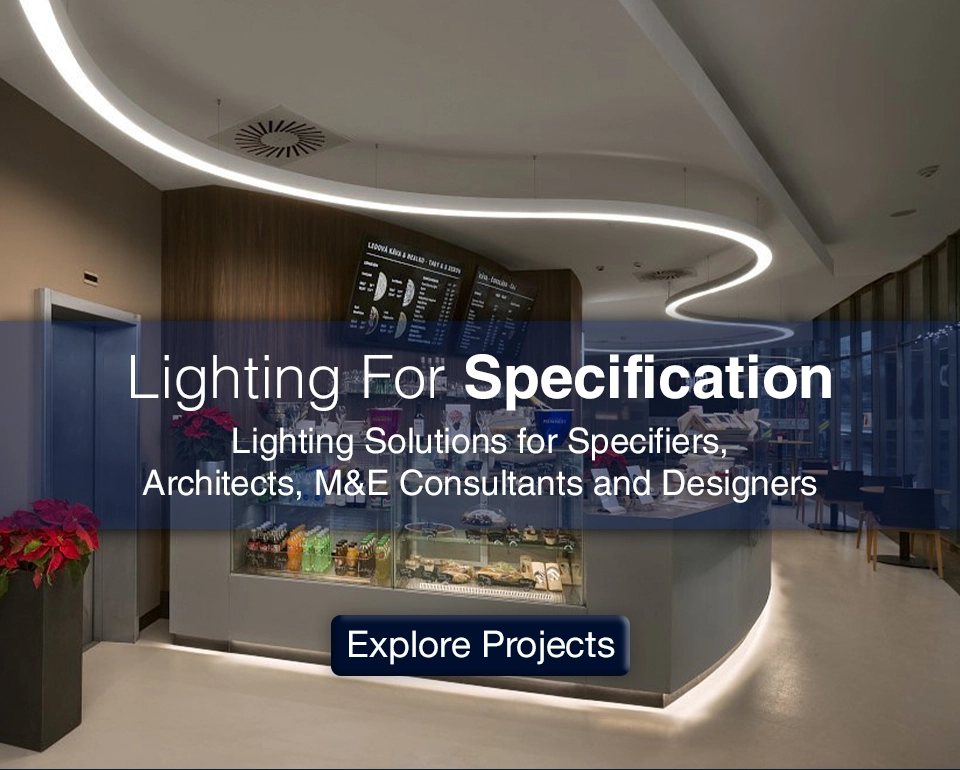
Energy Related Product (ERP) & Energy Label Directives
Frequently Asked Questions (FAQs)
ERP & Energy Label Directives
What are the new regulations being introduced?
- Eco Design EU 2019/2020 - Single Lighting Regulation (SLR) - The SLR provides product-specific performance requirements for energy-using and energy-related products.
- Energy Label EU 2019/2015 - Energy Label Regulation (ELR) - The ELR applies to light sources with or without control gear in terms of the energy labelling and voids any previous regulation.
What were the former ERP & Energy Labelling regulations?
The former ERP directives EC 244/2009, EC 245/2009, EU 1194/2012 and Energy Label directive EU 874/2012 had been in effect for nearly 10 years. Recently, the European Commission reviewed these regulations and analyzed the technical, environmental and economic aspects of lighting products as well as real-life user behaviour and issued new ERP directives EU 2019/2020 and energy label directive EU 2019/2015.
Why are these regulations changing?
The regulations have been brought into force in order to realign energy class ratings, plus encourage high energy efficiency during product development. It is believed there will be very few, if any at all, products in the A and B energy classes which should drive innovation across the whole electrical industry
What products are affected by the updated ERP directive?
The new regulations are only relevant to light sources and control gear products. Contained lighting products will not be affected.
What Aurora Products are affected by the upcoming ERP regulations?
There are NO Aurora products that will be affected by this regulation.
What are the main differences between the new and old ERP directives?
- Added separate control gears, household appliances and other products with lights in Scope. Separate control gears are also in the directives scope
- The calculation of energy efficiency has changed from EEI to Ponmax, which added the factor of Ra and improves the requirement of energy efficiency.
- Added flicker test: SVM, Pst LM. The flicker limited need to comply to:PstLM < 1.0 andSVM < 0.4
- Added the power consumption requirements of network standby. The standby power needs to be within 0.5W, such as DALI, Bluetooth, Zigbee, KNX all kinds of smart lighting control and lighting sensors
- Added minimum energy efficiency for separate control gear at full-load.
- Switching cycle, starting time and warm-up time test are deleted.
- 3600h durability test, which 3000 hours lighted on, the test time is reduced, but the requirement of luminous maintenance is improved.
What is the difference between the EU 2019/2015 directive and EU 874/2012 Energy labelling directives?
- The calculation of energy efficiency level is changed from EEI to TM (lm/W), which is more Intuitive.
- The classification of energy efficiency level is changed to: Class A ~ Class G.
- Higher energy efficiency requirements, Class A++ (EU 874/2012) is only equivalent to Class E (EU 2019/2015).
Will Brexit affect the ERP regulations coming into effect in the UK
No, the UK will follow the new EU regulations regarding ERP.
When do the new ERP regulations come into effect?
The new regulations come into force on the 1st September for the EU and the 1st October for the UK. There will be an 18 month transition phase that will come to an end on the 1st March 2023.
EXCEPTIONS - PRODUCTS THAT ARE EXEMPT FROM THE REGULATIONS
SLR: https://eur-lex.europa.eu/legal-content/EN/TXT/?uri=CELEX%3A32019R2020ELR: https://eur-lex.europa.eu/legal-content/EN/ALL/?uri=celex%3A32015R2120
- Luminaires with replaceable light sources
- Emergency lighting
- Battery-powered light sources
- Original artwork
- Lighting for military and transport equipment and vehicles
- Screens and displays
- Medical equipment
- Marine equipment
- A few specialty or niche products
ENERGY LABELLING
What is the new Energy Label regulation being implemented?
Energy Label EU 2019/2015 - Energy Label Regulation (ELR). The ELR, which applies to products inthe European and UK market, is applicable to light sources with or without control gear.
Luminaires that are containing products will no longer require an energy label (this has been applicable since December 25, 2019). As a light source, luminaires must be labelled as of September 1, 2021 (EU) or October 1, 2021 (GB).
How have the new energy labels changed?
The new energy labels will have a new information layout, the new energy classes will be listed from A to G (instead of A++ to E) and a product QR code now needs to be included. Labels for the EU will have the EU flag on it and GB labels will have the Union Jack flag on it.
What does the new energy label look like?

Will all labelling have to have been changed on 1st October in the UK?
No, there is a transition period to replace the old energy label with the new one. The old energy labels must be replaced by March 31, 2023 at the latest. Data of the new energy label must be placed on websites and in communication from 01.09.2021.
Why are energy labels changing?
The regulations have been brought into force in order to realign energy class ratings, plus encourage high energy efficiency during product development. It has been implemented to encourage the uptake of newer and increasingly efficient lighting technologies. It is believed there will be very few, if any at all, products in the A and B energy classes at this time, which should drive innovation across the whole electrical industry.
It ensures enhanced transparency and simplicity for both suppliers and customers.
What products are affected by the new energy labelling regulation?
All light sources will be evaluated in line with the energy labelling regulation.
Light sources in the Ecodesign Regulation will fall within the scope of energy labelling from September 1, 2021.
Exempt from this regulation: products for emergency use, light sources in batteries, original works ofart, transportation and military equipment and vehicles, displays, medical devices and marine equipment do not need to be labelled.
As of December 25, 2019, luminaires (contained products) are no longer required to be labelled, but fully integrated luminaires require an energy label beginning September 1, 2021.
Are the Aurora products you have already purchased, or the products in the wholesalers less efficientnow that the energy classes have changed?
No, there has been no change to our products. The parameters around the energy class ratings have been updated which affects the Energy Class. The specification and the performance of the products has not changed.
Can a contractor install a product, purchased before the 1st October, once the regulation has changed?
Yes, a contractor can install a product that has been purchased before 1st October with an old energy label.
Can a wholesaler or retailer sell a product, ordered before the 1st October, once the regulation has changed?
Existing products may be sold without reclassification until March 2023.
KEY TERMS
‘Light sources’ are electrically operated products that emit light, including traditional and LED lamps, a module or a luminaire with fully integrated components. Luminaires may be a light source (fully integrated luminaire) or may contain one or more light sources (containing product).
‘Containing products’’ are those that incorporate one or more light sources, or separate control gears, or both. Containing products include light sources that CAN be removed without sustaining any permanent damage. An example of a containing product is our mPro Fire Rated Downlight Containing products have not been required to carry an energy label since December 25, 2019.
Separate ‘control gears’, according to the EU regulations, are ballasts (CCG/ECG) that are not integrated into a light source. They must meet certain minimum energy efficiency requirements in accordance with the regulations.
EPREL is the European Product Database for Energy Labeling and home to all product characteristics. As part of the new regulations, entering the required data into EPREL is necessary for selling a product on the European market.









